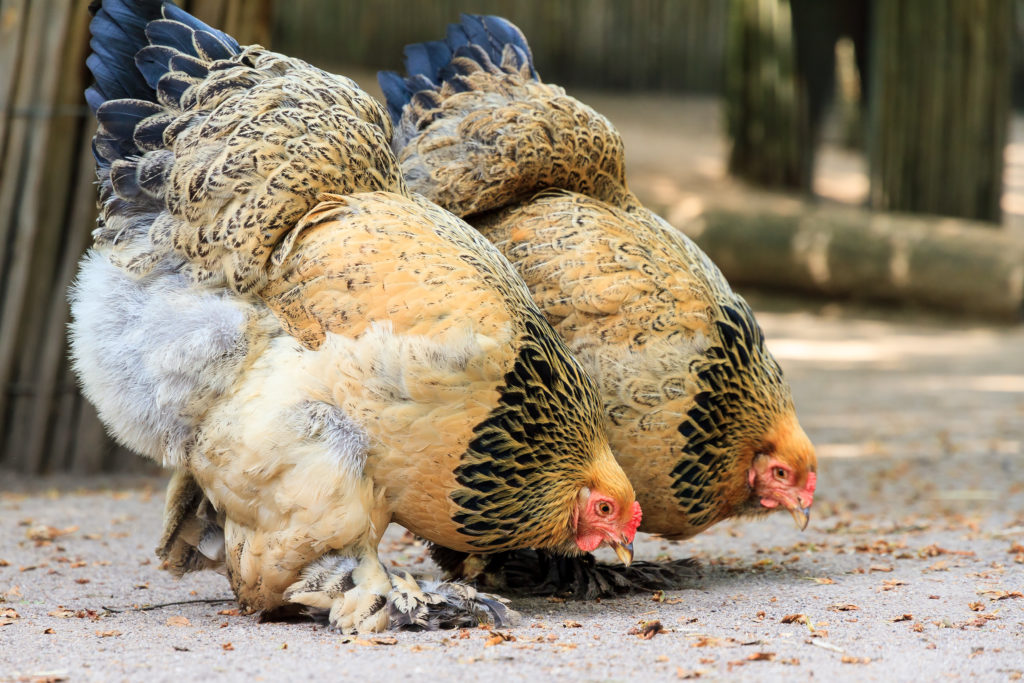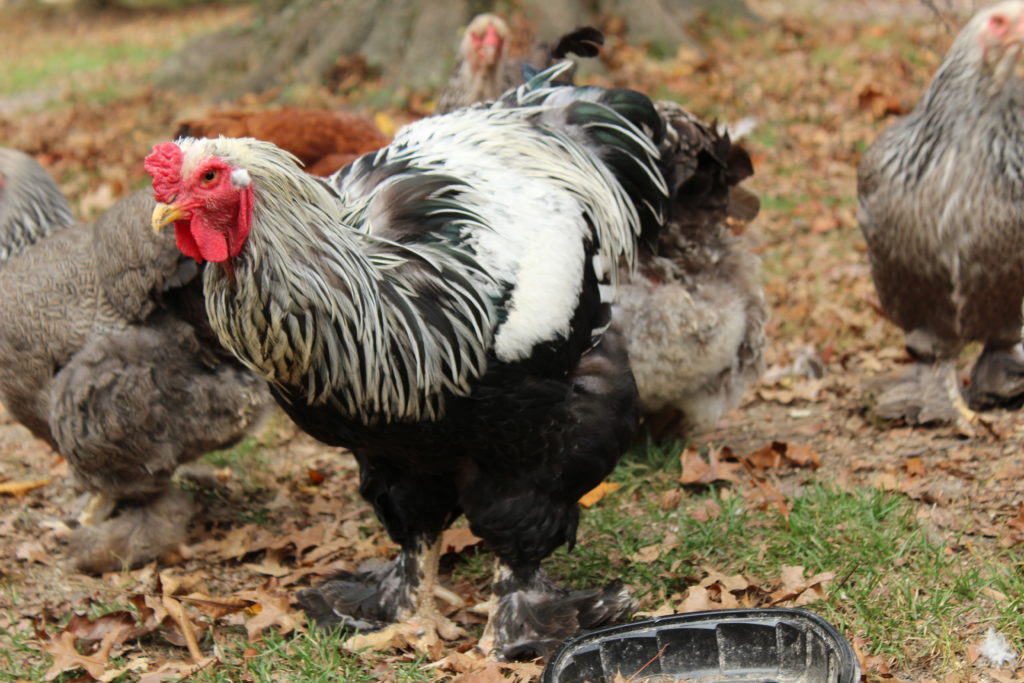Blogger Clair Woods tells us a bit about Brahma chickens.
The Brahma is widely known as one of the most majestic breeds of chicken. It is a favorite among beginners and veteran chicken owners alike. There was lots of debate among U.S. chicken owners in the mid-nineteenth century about the origin of the Brahma chicken. Some believed it to have ties to the Brahmaputra River in India. Others, knowing the birds had come into the U.S. through Shanghai, thought them related to Cochins or Shanghais chickens. Regardless of its origins, this enchanting chicken arrived in the U.S. and spurred a national love affair known as “hen fever.”

The King of Chickens
The Brahma is often referred to as the “King of Chickens” due to its large size and stately appearance. These birds average 12 pounds, and some have been recorded to grow to be 18 pounds. There are also bantam-sized Brahma weighing in at 38 ounces. They have the same characteristics as the larger birds, just in a smaller package.
Before the Cornish Cross broiler took its place as America’s meat chicken, many farmers chose the Brahma for as their meat bird. Today, they are still considered dual-purpose chickens due to their size and ability to produce around 150 eggs per year. Brahma lays medium to large eggs that are a lovely brown. For a large chicken, 150 eggs per year is quite a good number. It is certainly not the most egg-productive backyard chicken, but because most meat birds today barely lay any eggs at all, 150 isn’t a bad number.

Buff Brahma bantams, gallus gallus domesticus
Tendency Toward Broodiness
Brahmas hens tend to go broody, meaning they have a natural instinct to sit on their eggs until they hatch. When my Brahmas disappear, it usually means they are off sitting on their eggs. They love to hatch out baby chicks if given the opportunity, and they are fantastic mothers.
While some farmers continue to use the Brahma as a meat chicken, they aren’t typically considered for commercial production due to their slow growth rate. A Brahma can take up to 2 years to become full grown.
The Brahma comes in three different color variations: buff, light, and dark. They are considered to be feather-legged chickens due to the fluffy feathers that adorn their legs and feet. Observing a Brahma bustling about the yard is a sight to behold because their feathered feet gives the illusion of a chicken wearing boots.

Dark Brahma chickens, photo by Heidi Hall
Brahmas are both cold and heat tolerant, and do well across most climates; however, their lovely leg feathers often attract dirt and mud. In colder climates, their feet can become frostbitten if ice becomes stuck to them. So, while their little chicken boots may keep them warmer, they can also cause issues with ice and dirt.
Brahmas have thick feathering which helps them maintain a comfortable body temperature during the winter months. During the summer, their thick feathering doesn’t appear to cause any issues with heat. The Brahma’s pea comb is close to its head, which also prevents it from becoming frostbitten in colder climates.
So Zen
Brahma Chickens have a lot going for them, aside from being dual-purpose, tolerant of all climates, and feather-legged, they are also fantastic pets. Brahmas are a peaceful breed of chicken, and they have a zen-like attitude. They are entirely laid back and generally like to mind their own business, but this also makes them an easy target in the pecking order of a mixed flock. Their docile and passive demeanor also makes them a great pet chicken for children.  They don’t mind being picked up and carried around by a youngster, and Brahmas are rarely aggressive. Even the roosters are sweet and huggable.
They don’t mind being picked up and carried around by a youngster, and Brahmas are rarely aggressive. Even the roosters are sweet and huggable.
A Brahma is a utility bird, and it has many different purposes. Their beauty makes for a lovely yard ornament, and those who pride themselves on ornamental flocks will undoubtedly include a Brahma. As pets, these chickens are great with kids and make the perfect 4-H project. Overall, the Brahma is an excellent starter chicken for beginners, because of its dual-purpose and chilled out personality.
Claire Woods is the editor at The Happy Chicken Coop and is a fourth-generation chicken keeper. Her love for chickens has helped educate millions in the proper care and upbringing of all the countless types of chickens. She has also authored the book “Backyard Chickens: A Practical Handbook to Raising Chickens” and looks forward to contributing more in helping everyone in this great adventure of raising chickens.













3 Comments
I have 12 brahmas and at 5 months old we have one laying eggs as far as we know they are all hens…
Please are you able to send 100 eggs to Africa in the City of Nairobi where President Obama’s father was born???
Let me know
This are beauyfel birds.
I whis i cold buy som eggs from them to incubate